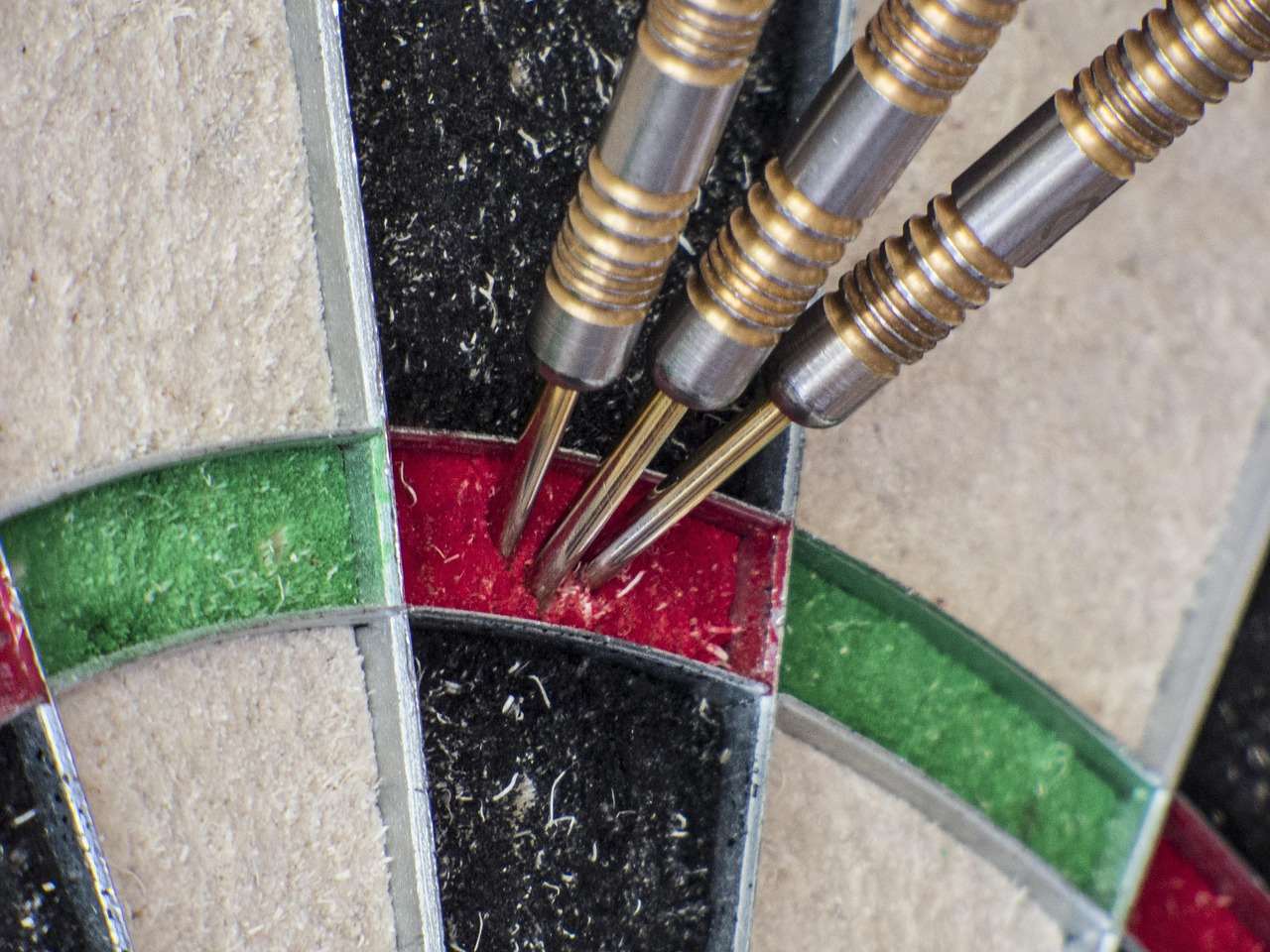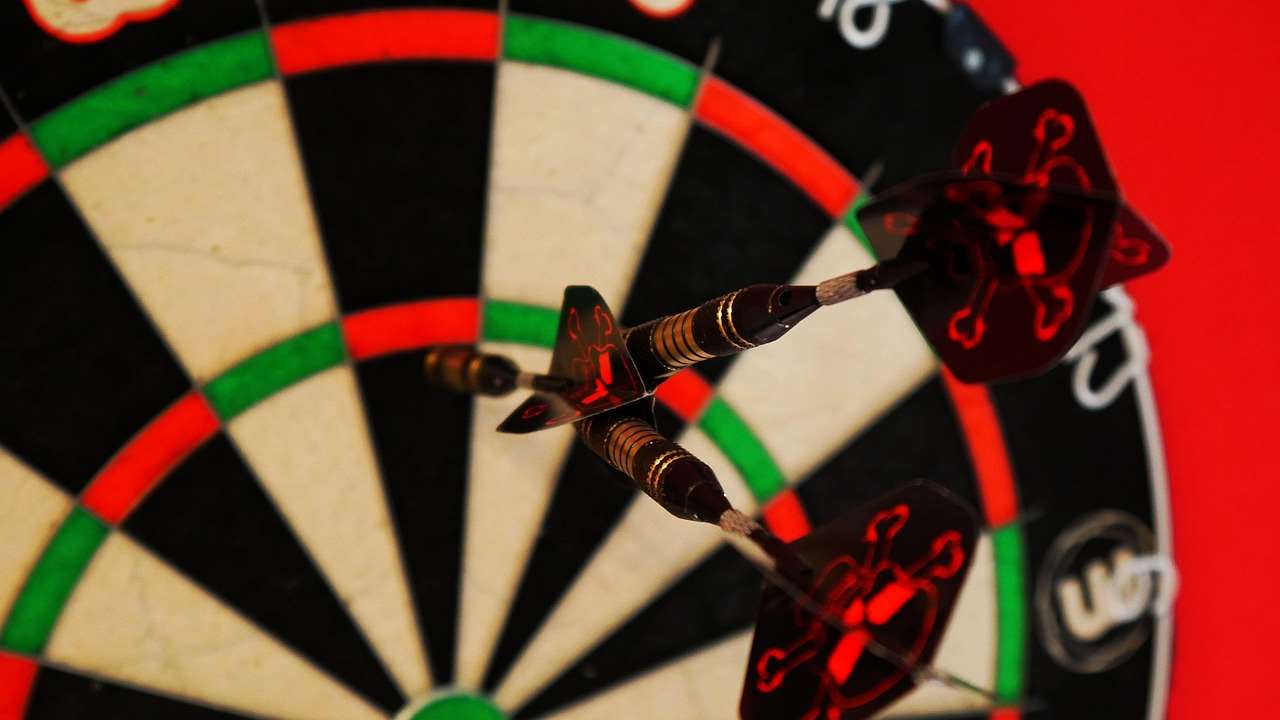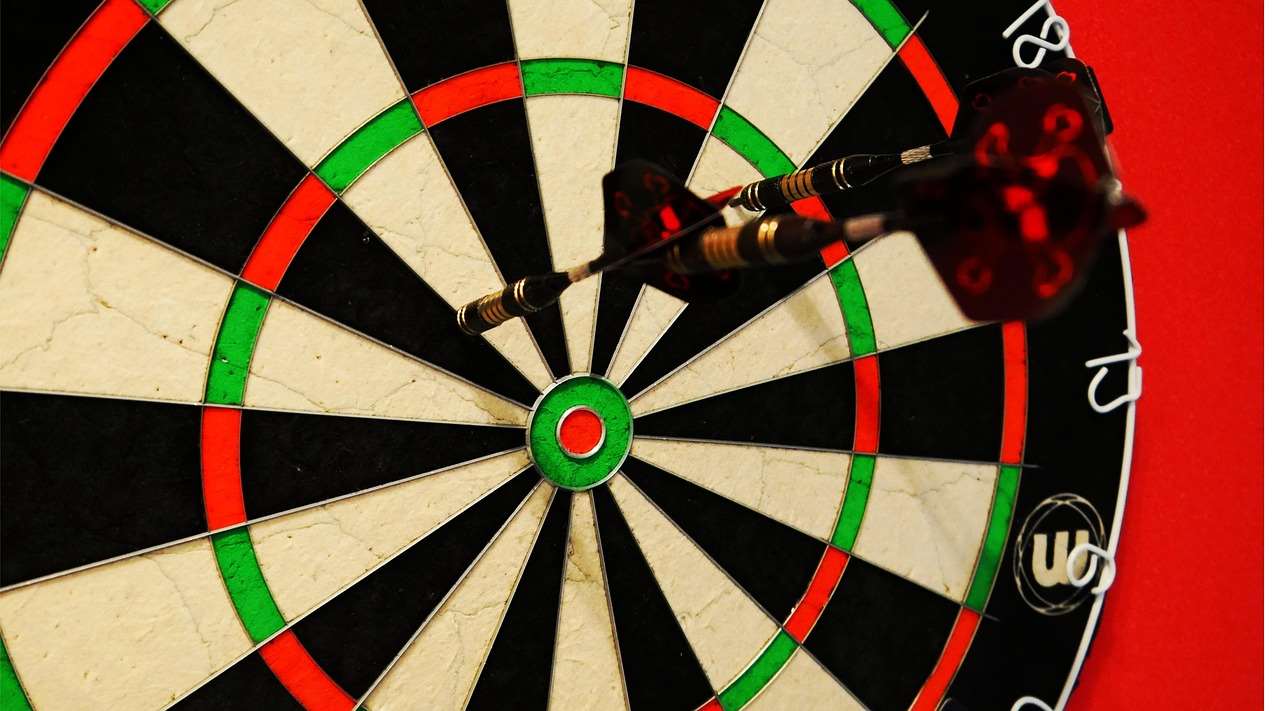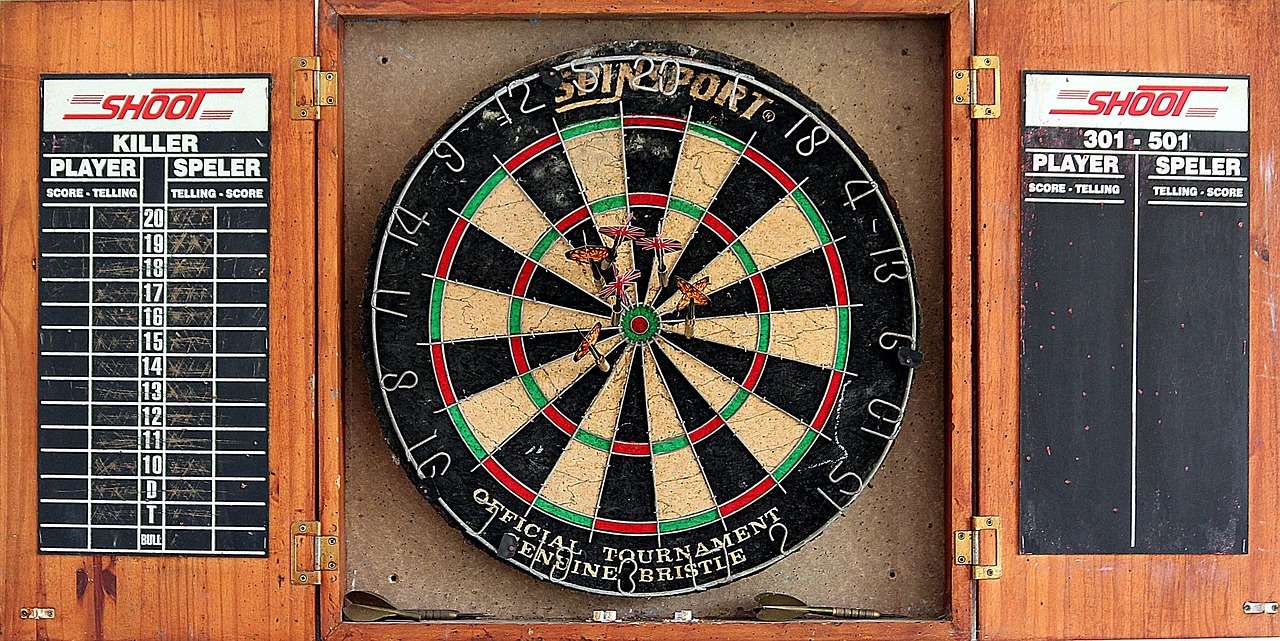Looking for a simple yet engaging pastime? Darts For Fun Entertainment is an excellent choice, offering hours of enjoyment for people of all ages and skill levels. This article will guide you through everything from the basics of playing darts to enhancing your experience and even turning it into a social activity.
⚠️ Still Using Pen & Paper (or a Chalkboard)?! ⚠️
Step into the future! The Dart Counter App handles all the scoring, suggests checkouts, and tracks your stats automatically. It's easier than you think!
Try the Smart Dart Counter App FREE!Ready for an upgrade? Click above!
Why Darts Makes for Fun Entertainment
Darts is a popular game for good reason. It’s accessible, relatively inexpensive to get started, and can be enjoyed by individuals or groups. Whether you’re aiming for a bullseye in your garage or competing in a local league, darts provides a great way to relax, socialize, and challenge yourself. Beyond the simple act of throwing, darts requires focus, strategy, and a bit of hand-eye coordination, making it mentally stimulating as well.
One of the key reasons darts is so appealing is its versatility. You can play a casual game with friends, participate in a serious competition, or simply practice alone to improve your skills. The game’s straightforward rules and objective make it easy to learn, while the nuances of technique and strategy offer endless opportunities for improvement. This blend of simplicity and depth ensures that darts remains an engaging activity for players of all levels. If you are going to a darts event, then read What To Expect At Live Darts.

Getting Started with Darts: The Basics
Before you start playing, it’s essential to understand the basic equipment and rules of the game. This includes choosing the right dartboard, darts, and understanding the standard gameplay.
Choosing the Right Dartboard
The most common type of dartboard is the bristle dartboard, made from compressed sisal fibers. These boards are self-healing, meaning the holes close up after the darts are removed. When selecting a dartboard, look for one that meets official tournament specifications. Key features to consider include:
- Regulation Size: The official size of a dartboard is 17 3/4 inches (451 mm) in diameter.
- Wiring: Thinner wires reduce bounce-outs and increase scoring potential. Look for boards with embedded or triangular wires.
- Construction: A tightly packed bristle board will last longer and provide a better playing surface.
Properly setting up your dartboard is crucial. The center of the bullseye should be 5 feet 8 inches (1.73 meters) from the floor. The throwing line, or oche, should be 7 feet 9 1/4 inches (2.37 meters) from the face of the dartboard.
If you want to learn more about the darts culture and community surrounding the sport, check out the article Darts Culture And Community Guide.
Selecting Your Darts
Choosing the right darts is a personal preference, but there are a few key factors to consider:
- Weight: Darts typically range from 16 to 30 grams. Lighter darts are generally easier to throw, while heavier darts may offer more stability. Experiment to find the weight that feels most comfortable for you.
- Material: Brass darts are more affordable and suitable for beginners. Tungsten darts are denser and more durable, providing a slimmer profile and better grip.
- Grip: Different dart barrels feature various grip patterns. Some players prefer a knurled grip for enhanced control, while others prefer a smoother barrel.
- Flights and Shafts: These components affect the dart’s aerodynamics and trajectory. Experiment with different shapes and lengths to find what works best for your throwing style.
Understanding the Rules
The most common darts game is 501. Each player starts with 501 points and must reduce their score to zero by hitting specific numbers on the dartboard. Here are the essential rules:
- Starting and Finishing: In most variations, you must start and finish with a double (a number in the outer ring).
- Scoring: The score for each dart is determined by the number on the segment it lands in. Hitting the outer ring doubles the score, while hitting the inner ring triples the score. The bullseye is worth 50 points, and the outer bull (single bull) is worth 25 points.
- Bust: If a player scores more points than needed to reach zero, or if they fail to finish on a double, their turn ends, and their score reverts to what it was at the beginning of that turn.

Enhancing Your Darts For Fun Entertainment Experience
Once you understand the basics, you can take steps to enhance your experience and improve your gameplay. This includes refining your throwing technique, practicing regularly, and exploring different game variations.
Mastering Your Throwing Technique
A consistent throwing technique is crucial for accuracy. Here are some tips to help you improve:
- Stance: Stand with one foot forward, pointing towards the dartboard. Maintain a balanced and stable posture.
- Grip: Hold the dart with a comfortable and consistent grip. Avoid gripping too tightly, which can cause tension and affect your accuracy.
- Arm Movement: Keep your upper arm still and use your forearm to generate the throwing motion. Aim for a smooth and controlled release.
- Follow-Through: Extend your arm fully towards the target and maintain your follow-through. This helps ensure a consistent release point.
Practice these elements regularly to develop a smooth and repeatable throwing motion.
The Power of Regular Practice
Like any skill, improving at darts requires consistent practice. Set aside time each week to work on your technique and accuracy. Here are some effective practice drills:
- Target Practice: Focus on hitting specific numbers on the dartboard, such as 20, 19, and the bullseye.
- Doubles and Trebles: Practice hitting doubles and trebles, as these are essential for finishing games.
- Around the Clock: Start at number 1 and work your way around the dartboard, hitting each number in sequence.
- High Scores: Aim for high scores by consistently hitting the treble 20.
Keep track of your progress and identify areas where you need to improve. Regular practice will help you develop muscle memory and improve your overall consistency.

Exploring Different Game Variations
While 501 is the most common darts game, there are many other variations that can add variety and excitement to your playing experience. Some popular options include:
- Cricket: A strategic game where players must “close” numbers by hitting them three times before their opponent does.
- Around the World: Players must hit each number on the dartboard in sequence, starting from 1 and working their way up to 20.
- Killer: A game where players must hit their own number to become a “killer” and then eliminate their opponents by hitting their numbers.
Experiment with different game variations to find the ones you enjoy the most. This can help keep your darts sessions fresh and engaging.
Turning Darts into a Social Activity
Darts for fun entertainment is even better when shared with others. Whether you’re playing with friends, family, or joining a local league, darts can be a great way to socialize and build community. If you want to know more about Fan Culture At Live Darts, then you can get your answers here.
Playing with Friends and Family
Hosting darts nights with friends and family is a fun and easy way to get everyone involved. Set up a dartboard in your game room or backyard, provide some refreshments, and let the games begin. Consider organizing friendly competitions or tournaments to add an element of excitement. Darts is a sport for all ages, giving it a fun family atmosphere.
To make the experience even more enjoyable, consider:
- Creating Teams: Divide players into teams and compete in head-to-head matches.
- Setting Handicaps: Adjust the starting scores or rules to level the playing field for players of different skill levels.
- Offering Prizes: Award small prizes to the winners of each game or tournament.
Joining a Darts League
Joining a local darts league is a great way to meet new people, improve your skills, and compete in a more structured environment. Darts leagues are typically organized by pubs, clubs, or community centers. Look for leagues that match your skill level and playing preferences. Before you go to a live darts event, read Travel Tips For Darts Tournaments.

Benefits of joining a darts league include:
- Regular Competition: Play against different opponents each week and test your skills in a competitive setting.
- Skill Development: Learn from more experienced players and improve your technique through regular practice and competition.
- Social Interaction: Meet new people who share your passion for darts and build lasting friendships.
Organizing Your Own Darts Tournament
If you’re feeling ambitious, consider organizing your own darts tournament. This can be a great way to bring together friends, family, and fellow darts enthusiasts for a fun and memorable event. Here are some tips for organizing a successful darts tournament:
- Plan Ahead: Set a date, time, and location for the tournament. Determine the format, rules, and entry fees.
- Promote the Event: Spread the word through social media, email, and word-of-mouth. Create flyers or posters to attract participants.
- Prepare the Venue: Ensure that the dartboards are properly set up and that there is ample space for players and spectators. Provide refreshments and entertainment.
- Run the Tournament Efficiently: Create a tournament bracket and keep track of the scores. Enforce the rules fairly and consistently.
- Award Prizes: Provide prizes for the winners and runners-up. Consider awarding prizes for other achievements, such as the highest score or the most bullseyes.
Safety Considerations for Darts
While darts for fun entertainment is generally a safe activity, it’s essential to take precautions to prevent injuries. Follow these safety tips to ensure a safe and enjoyable playing experience:
- Keep Spectators at a Safe Distance: Ensure that spectators are standing well behind the throwing line and away from the dartboard.
- Never Throw Darts When Someone is in Front of the Board: Wait until the area is clear before throwing your darts.
- Use a Dartboard Surround: A dartboard surround can protect the wall from stray darts and reduce the risk of damage.
- Inspect Darts Regularly: Check your darts for any signs of damage, such as loose flights or bent points. Replace any damaged darts immediately.
- Store Darts Safely: Store your darts in a safe place when not in use, away from children and pets.

Conclusion
Darts For Fun Entertainment is an accessible and engaging pastime that offers something for everyone. Whether you’re looking for a relaxing way to unwind, a competitive sport to challenge yourself, or a social activity to enjoy with friends and family, darts has you covered. By understanding the basics, mastering your technique, and exploring different game variations, you can enhance your experience and get the most out of this timeless game. So grab some darts, aim for the bullseye, and enjoy the endless possibilities of darts!
Ready to take your darts game to the next level? Start by investing in quality equipment and practicing regularly. Consider joining a local darts league or organizing your own tournament to share your passion with others. The world of darts awaits – go ahead and give it a shot!
Hi, I’m Dieter, and I created Dartcounter (Dartcounterapp.com). My motivation wasn’t being a darts expert – quite the opposite! When I first started playing, I loved the game but found keeping accurate scores and tracking stats difficult and distracting.
I figured I couldn’t be the only one struggling with this. So, I decided to build a solution: an easy-to-use application that everyone, no matter their experience level, could use to manage scoring effortlessly.
My goal for Dartcounter was simple: let the app handle the numbers – the scoring, the averages, the stats, even checkout suggestions – so players could focus purely on their throw and enjoying the game. It began as a way to solve my own beginner’s problem, and I’m thrilled it has grown into a helpful tool for the wider darts community.